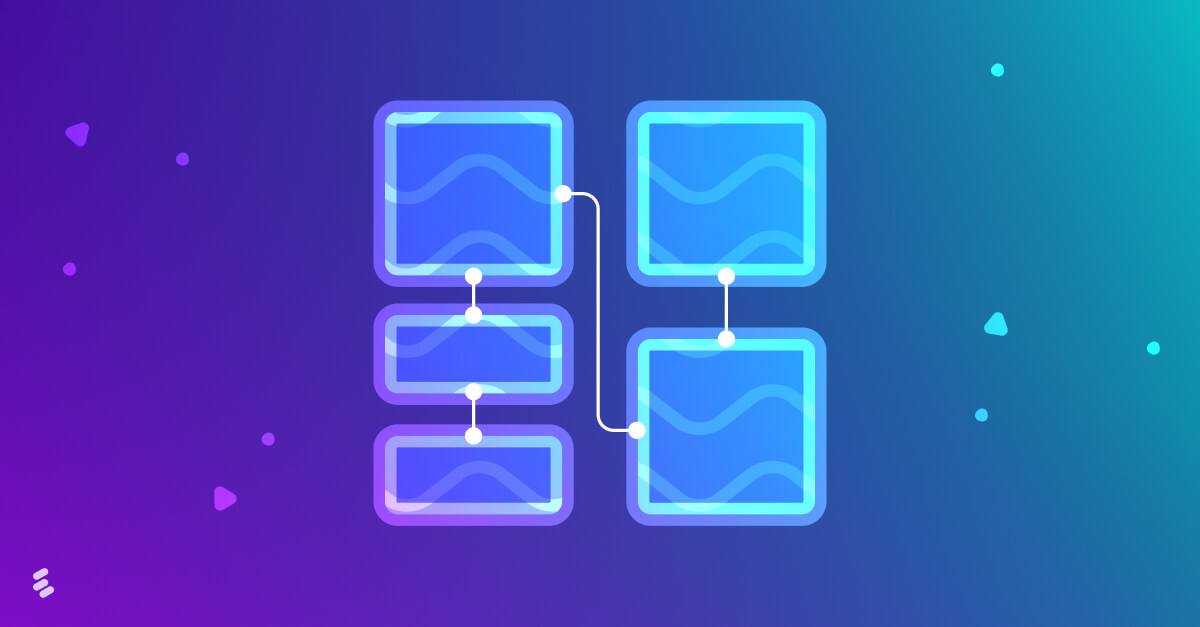Data modeling: What it is and how to do it (+ Tools)
June 30, 2022

Data is a powerful resource that you can use to solve business problems in real time. Most of your data will come from your business processes and software system. To take full advantage of your data, you’ll need to dive into data modeling.
What is data modeling?
Data modeling is a set of techniques that are used to define and analyze data. To do data modeling, you don’t need a technical background. What is important is that you are analytical, logical, and understand the role of data in a process.
Why is data modeling important?
A comprehensive data model makes for simple operations for a business. It offers efficient data storage and analysis, removes redundancy and omission, enables efficient retrieval, and allows for better data-driven decisions.
The 3 stages of data modeling
There are three stages to data modeling: These are conceptual modeling, logical modeling, and physical modeling.
1. Conceptual data modeling
This is a visual representation of business processes, their characteristics, and the relationship between them. To create a conceptual data model, you do not need any software tool. You can simply draw it on a piece of paper or a whiteboard.
2. Logical data modeling
Once you’ve created your conceptual data model, you can elaborate it into a logical data model. To do this, you can add key and non-key attributes to the entities. Additionally, you can show primary-key and foreign key relationships. At this stage of logical data modeling, the data model is agnostic and you can implement it on any database.
3. Physical data modeling
In a physical data model, the entities are transformed into tables, while the attributes are transformed into columns. Database-compatible table names and column names, and database-specific data types are given. For easy understanding, it’s best to use the logical data model to explain your data to users while using a physical data model to do the analysis.
Data modeling examples and use cases
There are different approaches to data modeling. Below, we’ll look at some of the most popular data models.
1. Hierarchical data models
This is one of the oldest database models. One of the first hierarchical data models was the Information Management System, which was developed by IBM in 1966. Just like the name suggests, a hierarchical data model uses hierarchy to show the relationship between entities. It’s based on a tree data structure, which starts from the top/root (parent entity) and then goes down to the child.
A hierarchical data model can be used to show inventory. For example, if you have a clothing store, the “parent” entity is clothes. From it, you will have two “child” entities, i.e., women’s clothes and men’s clothes. With these two “child” entities, you can create other child entities of different types of clothes for women and men. The women’s clothes can then have “child” entities: dresses, tops, pants, etc. For men, there could be shirts, trousers, coats, etc.
2. Relational data models
The relational data model was first introduced in 1970 by E.F. Codd, a computer scientist who was working with IBM. The model is based on the intuitive approach of organizing data in tables with rows and columns. Relational data models are used in enterprise computing, such as tracking inventories, managing customer information, processing e-commerce transactions, etc.
3. Entity-relationship (ER) data models
Just as the name suggests, an entity-relationship (ER) data model shows how “entities” relate to one another within the data model system. Take an online transaction, for instance. When a customer purchases from an e-commerce store, a unique order code is generated (this is the entity). The customer can buy one or multiple items, add or remove items from their order, change the quantity, and even make returns after purchase. All of this is the relationship(s) to the entity and is illustrated in an ER model.
4. Object-oriented data models (OODM)
The object-oriented data model captures compound real-life problems best. It models complex real-life scenarios by combining object-oriented programming and the relational database model. For example, in keeping a sales funnel, you can use an object-oriented model. The prospect (a real-world entity) will be the object. Their details—name, phone, and email—will be the attributes of the object (prospect). When the prospect turns into a client, you now have two objects: PROSPECT and CLIENT.
The prospect already has the attributes of name, phone, and email. The client object inherits these attributes, and you add more attributes like client ID, address, social security number, and payment information. Under the OODM, you organize your data around a real-life scenario (object) rather than organizing it under logic and function.
5. Dimensional data models
This data model is used to optimize the database for faster retrieval of data. It’s mainly used in OLAP (online analytical processing) such as trend analysis, sales forecasting, financial reporting, and other planning objectives.
Best data modeling practices
How you present your data model to the end user and how easily the model answers their questions will guide your data modeling best practices. Here are a few things to keep in mind:
1. Be clear about your end goals
To get the most out of your data modeling efforts, have a clear end goal in mind.
The end goal of any data modeling is to improve business. You can only do this if you’re clear on what you want to change or improve. So, from the get-go, be clear on your desired outcome, and then model your data accordingly.
2. Keep it sweet and simple
Keep your data models small and simple when you begin. Once you’re confident with the initial models, you can steadily add more datasets.
3. Organize your data based on facts, dimensions, filters, and order
To best answer your business questions, organize issues in terms of facts, filters, dimensions, and order. For example, if you have a retail business with over 100 stores, and you want to know which store sold the most of a particular product in the last year, you can use facts, filters, dimensions, and order to get your answer.
In this example, the “facts” will be the sales data of the product in each store, the “dimension” will be the product and store location. The “filter” is “last 12 months” and “order” is “top 10 stores in decreasing order.” This format for organizing your data model will help you generate better business intelligence.
4. Check and check again
If you are data modeling for an extensive project, double-check your data model before going to the next step. This practice will protect you from making careless mistakes with your data.
Tools for data modeling
Finding the right data modeling tool(s) to meet your needs can be challenging. To make the best choice, you should first find a data tool that organizes large amounts of data in a simple-to-find way. Second, it should have good visual representations of complex topics. Finally, it should streamline data mapping through the enterprise.
Here are some data modeling tools to consider:
- erwin Data Modeler is a data modeling tool by Quest used to design, visualize, and report data assets.
- Enterprise Architect is a visual modeling and design tool that supports the data modeling of business processes.
- ER/Studio is a data modeling tool that helps in mapping complex data. It supports both dimensional and relational data modeling.
Master your data modeling with Lytics
Lytics is a premier data modeling tool that will go beyond just meeting your needs. Lytics maintains one secure location for all your data and integrates directly with the data warehouse(s) you already use (Google BigQuery, Snowflake, Microsoft Azure, Amazon Redshift). Sign up today for a free Cloud Connect account on Lytics and get started with data modeling.


